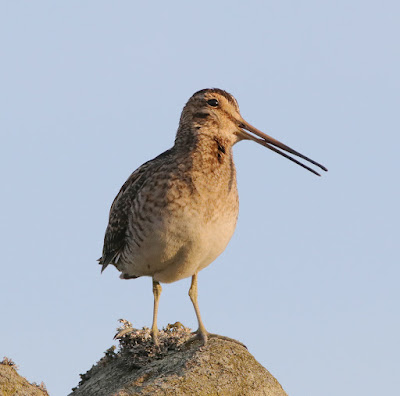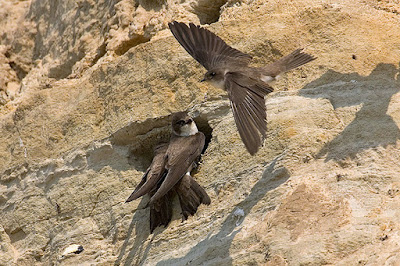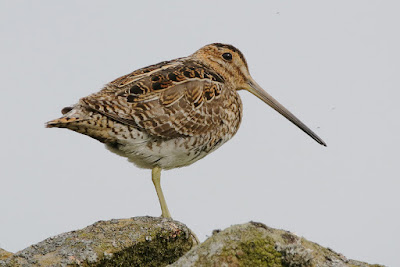The week has been mixed - more of our very special English summer and the longest days when wind and rain battle for supremacy and winner takes all. It’s hard to say which came out on top this week but let’s just say that my suntan didn’t improve and birding was left on hold for a day or two.
Sunday morning dawned dull and cloudy but I was determined to have a go so set off on the usual circuit. A Barn Owl hunted over Stalmine moss but then dived into the farmyard as the car got closer. Never mind, I saw another one later on the way back home and in broad daylight hunting next to the busy main road.
Barn Owl
I guess most Barn Owls have mouths to feed at the moment and are spending more time in hunting, even in the daylight. Just three weeks ago Andy and I had a brood of four Barn Owls at an ideal stage to ring but had to call it off as the owls were in an avian flu zone where ringing was suspended.
Ringing restrictions have been lifted but it seems that the source of last winter’s major outbreak, a game bird hatchery, is now up and running again after receiving Government (taxpayer) compensation rumoured to be around £1,000,000. Now if we could just spend the same amount of money on protecting a few of our local sites for birds and people?
I stopped at Gulf Lane to survey the set-aside field and where we hope to restart our Linnet ringing project in August. The field is looking good with tremendous growth on the wild bird and wildflower mix and a few birds in evidence by way of 4 Skylark, 4 Whitethroat, 3 Tree Sparrow, 4 Stock Dove and a Kestrel. A Grey Heron flew over – on the way to Pilling duck pond from the direction of flight.
Whitethroat
Kestrel
At Conder Green I donned a jacket against the cold north wind and spitting clouds. Likewise and on on the floating pontoon the tern chicks huddled against the plastic cladding and waited for the adults to arrive with breakfast.
Common Tern
There have been good counts of Avocets in recent weeks. The best I could manage again today was 4 adults and just one half-grown youngster so the overall survival rate here seems very low given that up to five pairs may have bred or partly bred.
Lapwings are back in some numbers with a combined count of 36 ensconced on the island or feeding in the channels. Redshanks are on the increase too with a count of 30+, also 2 Common Sandpiper, 15 Oystercatcher and 3 Curlew. Duck counts are restricted to just two species at the moment until the Wigeon and Teal arrive, so 6 Tufted Duck, 15 Shelduck and 22 Mallard.
Tufted Duck
Feeding around the pool and over the hedgerows I counted 10+ Sand Martin, a handful of Swallows and a single Swift.
In the creeks - 2 Grey Heron and 1 Little Egret.
That was about my lot when the rain returned and I headed home. I’m out birding in the week so call in to Another Bird Blog soon and see what you’ve missed.
Linking today to World Bird Wednesday.
Linking today to World Bird Wednesday.



























































.JPG)






.jpg)











